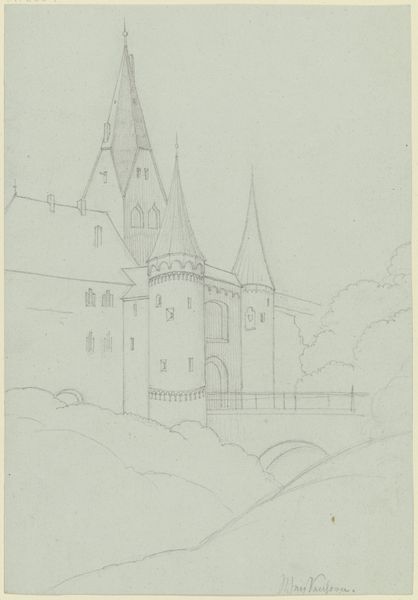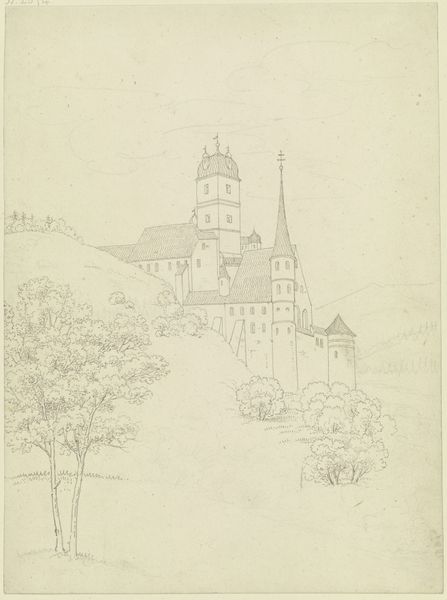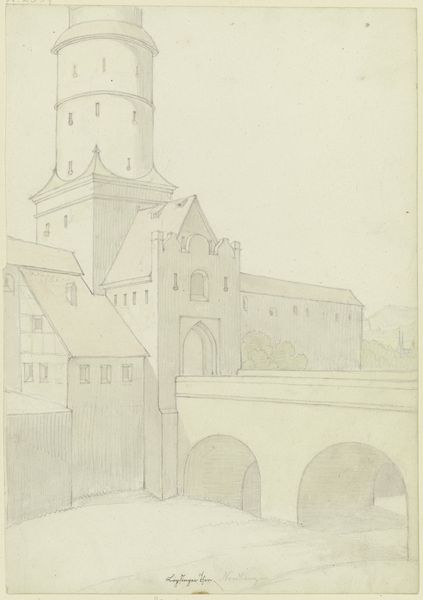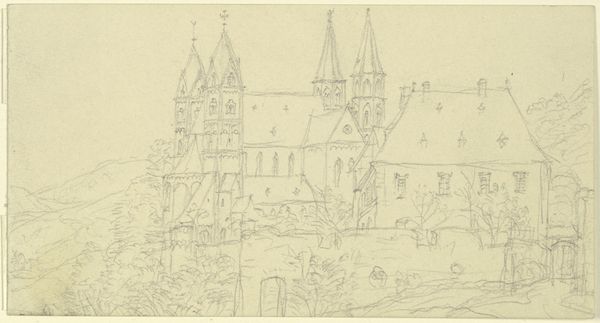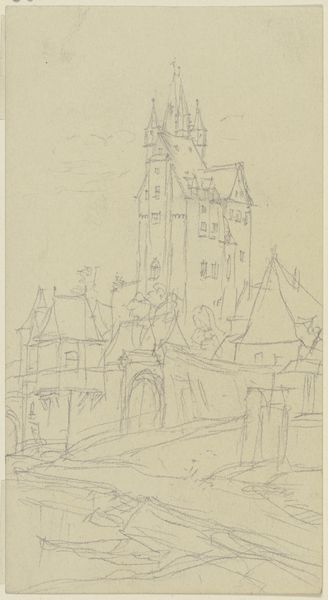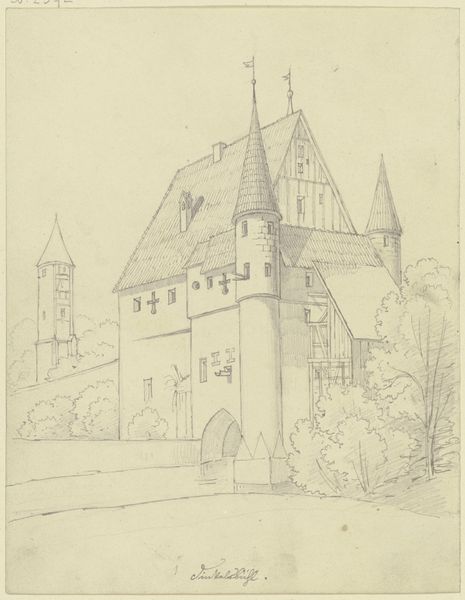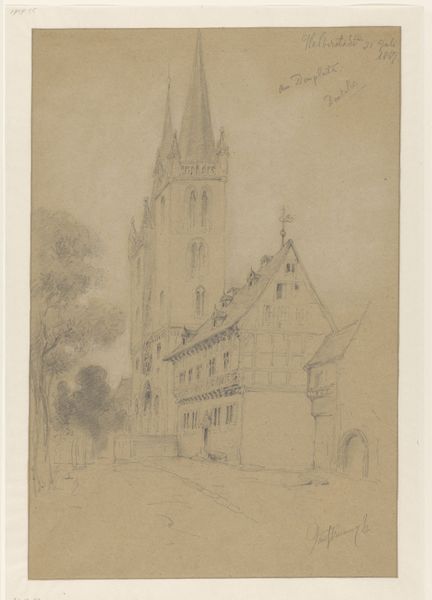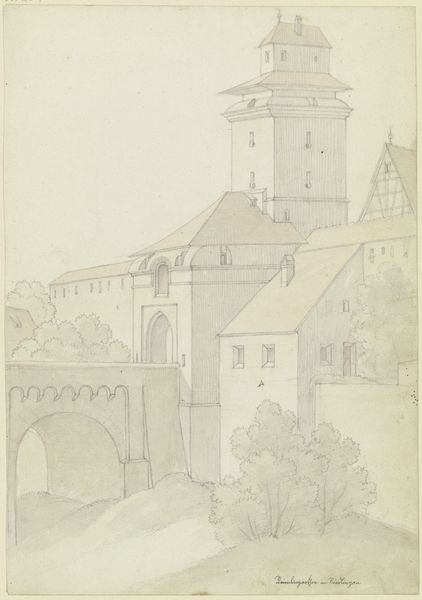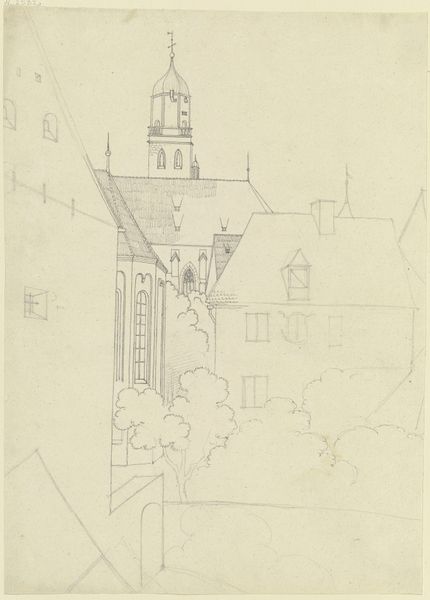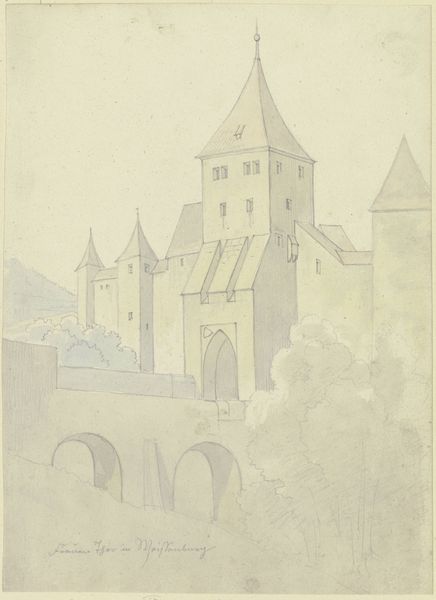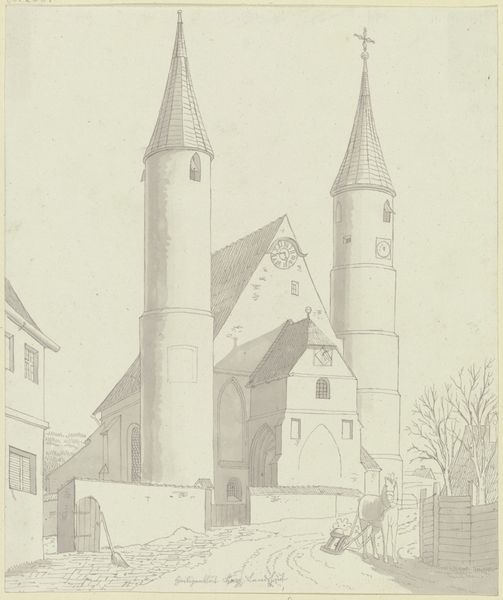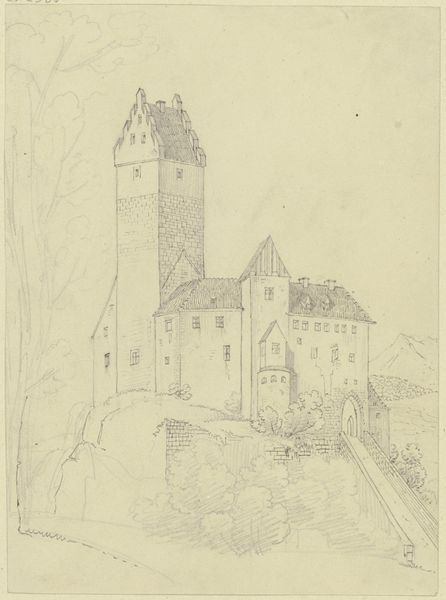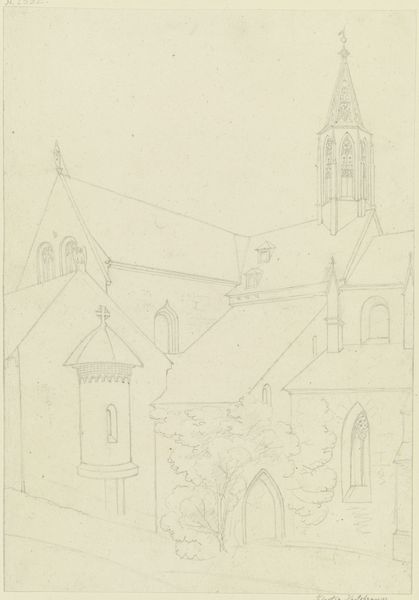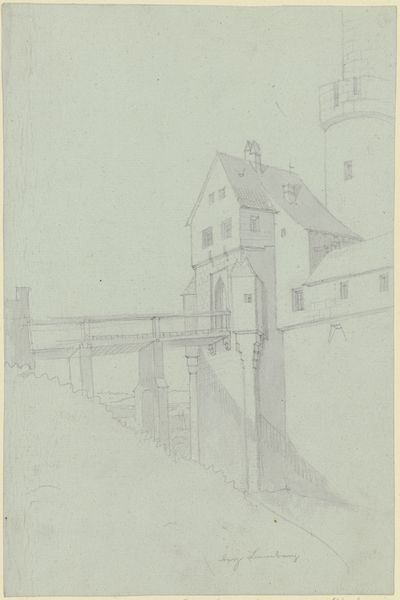
drawing, paper, pencil, architecture
#
drawing
#
16_19th-century
#
landscape
#
paper
#
pencil
#
cityscape
#
architecture
#
realism
Copyright: Public Domain
Curator: Karl Ballenberger's pencil drawing, "Ornbau mit St. Jakobus bei Ansbach," depicts a cityscape, featuring architectural elements around the church of St. Jakobus. Editor: It has a fragile, dreamlike quality, doesn't it? All soft edges and delicate lines. It feels more like a memory of a place than a precise depiction. Curator: Indeed. The pencil medium lends itself to a sense of immediacy, a fleeting impression captured on paper. Notice how Ballenberger uses varying pressure to create depth, suggesting both distance and the play of light. Editor: The architecture itself is quite fascinating. The roofs clustered together give it almost a medieval, fortress-like appearance. It definitely speaks of a time of great change and growth. I can imagine generations having looked over it. Curator: The cityscape theme places human endeavors, faith, commerce, defense—all intertwined. St. Jakobus, a key symbol of the town. Its depiction shows its deep connection to the community, its stories woven together into a physical form that provides physical and symbolic protection for those living in the valley. Editor: It's all angles and edges softened by water reflecting back the towers. I like how this work emphasizes our collective desire for solid structures as reflections of more fluid identities. Curator: That is a good observation. Consider the cultural weight of cathedrals; often designed not only to express devotion but also to project power and endurance across time. Their artistic treatment—their depiction on paper like this—mirrors changing perspectives toward social and political structures. Editor: And what about the almost total absence of people? This makes the structures appear grand, stoic but with no figures included. Curator: It certainly directs our attention towards the symbolic weight of architectural forms themselves—their ability to signify permanence, faith, community... Editor: Seeing it all in these fading tones and soft strokes makes me wonder, who walks across the bridge nowadays, or has this scene survived without our recognition? What ghosts does architecture evoke? Curator: Questions that continue to resonate. An apt end note I would say. Editor: To moments captured.
Comments
No comments
Be the first to comment and join the conversation on the ultimate creative platform.
